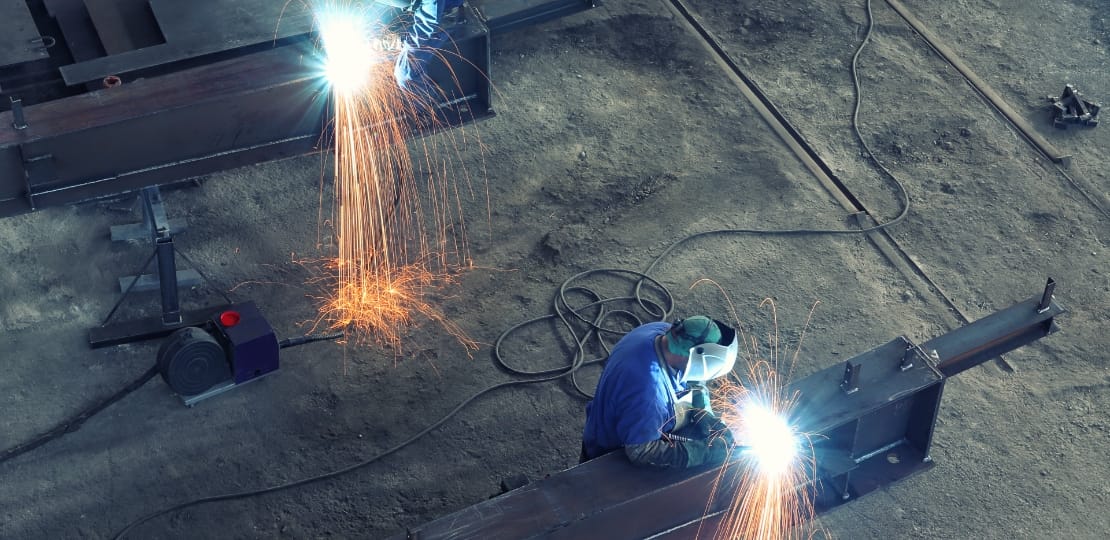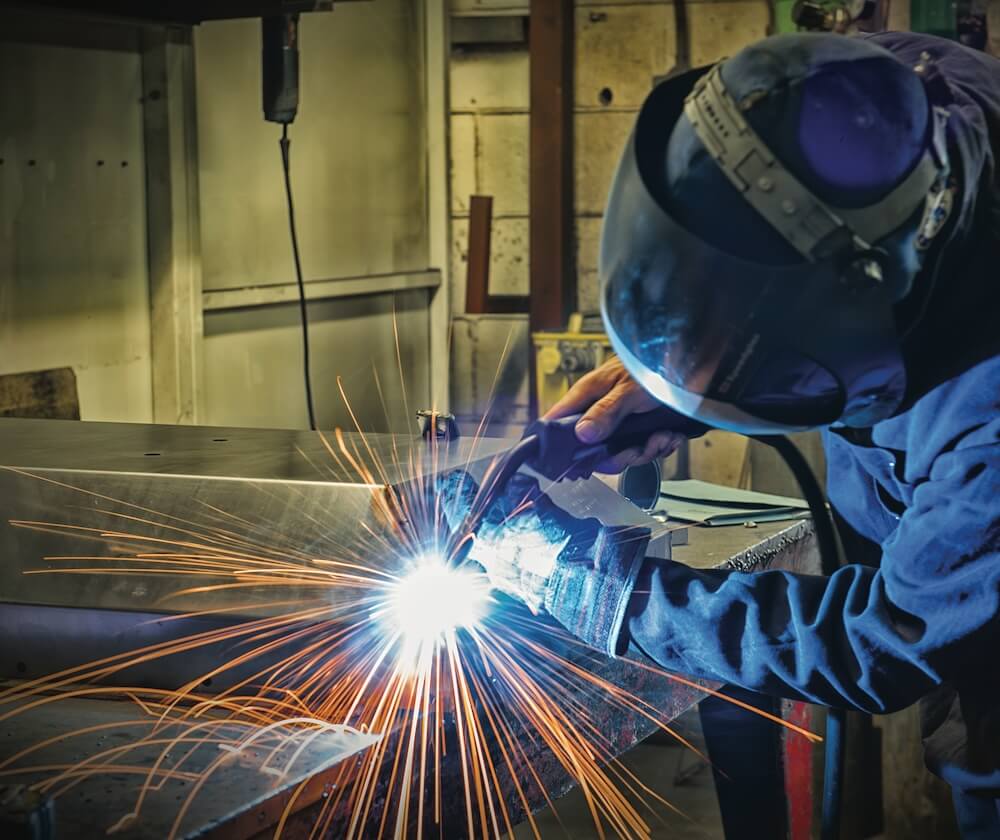Usual Welding Repair Service Issues and How to Address Them Efficiently
Welding repair services typically experience a variety of issues that can jeopardize the integrity of the last product. Usual issues include inadequate infiltration, porosity, and imbalance, among others. Each flaw offers unique difficulties that call for certain approaches for resolution. Understanding these issues is vital for welders aiming to improve their results and skills. This conversation will certainly check out these usual welding repair work concerns and reliable techniques to address them.
Inadequate Penetration
Poor infiltration takes place when the weld steel stops working to completely fuse with the base product, resulting in weak joints and possible structural failings. This concern often stems from inadequate heat input, inaccurate electrode angle, or incorrect welding rate. Welders might come across poor penetration as a result of a mistake of the necessary specifications for a specific product density or type. Furthermore, contamination on the base material's surface area can hinder effective bonding, intensifying the issue. To address insufficient infiltration, welders ought to assure suitable settings on their equipment and maintain a clean job surface area. Routine evaluation of welds is suggested to determine any type of shortages early, permitting for prompt corrections and the prevention of jeopardized structural stability in bonded settings up.
Porosity
Porosity is a common problem in bonded joints that materializes as little gas bubbles trapped within the weld steel. This issue can compromise the integrity of the weld, causing minimized toughness and possible failure under tension. Fabrication. Porosity typically emerges from contamination, moisture, or improper welding techniques, which allow gases to escape into the liquified weld pool. To deal with porosity, welders should assure correct surface area prep work, preserve a clean working atmosphere, and use appropriate welding specifications. Furthermore, choosing the best filler product and shielding gas can alleviate gas entrapment. Routine evaluation and screening of welds can help recognize porosity early, ensuring timely rehabilitative activities are taken, consequently preserving the quality and reliability of the welded structure
Imbalance
Imbalance in welding can emerge from numerous factors, consisting of improper configuration and thermal expansion. Recognizing the source is essential for efficient resolution. A number of modification techniques are readily available to straighten parts and assure structural stability.
Root causes of Imbalance
Welding misalignment frequently stems from a selection of underlying issues that can endanger architectural integrity. One key cause is incorrect fit-up of components before welding, which can lead to voids and uneven surface areas. Variants in thermal development throughout the welding procedure can also lead to distortion, especially if the materials being joined have various coefficients of growth. In addition, inadequate fixturing and clamping might fail to hold parts safely in position, leading to motion throughout welding. Improperly kept tools, consisting of welding devices and devices, may introduce inconsistencies in the weld bead, further adding to imbalance. Finally, operator error, originating from inadequate training or experience, can likewise play a significant function in producing misaligned welds.
Adjustment Techniques Available
Resolving misalignment efficiently calls for a combination of corrective techniques tailored to the particular concerns at hand. One usual technique is the usage of components or jigs to hold parts in the appropriate placement during welding, making certain regular alignment. Furthermore, preheating the products can help in reducing distortion and boost fit-up. For significant imbalance, mechanical adjustment methods, such as using hydraulic jacks or clamps, can be used to remedy the position prior to welding. Post-weld warm therapy may additionally be essential to soothe stresses triggered by misalignment. Finally, careful evaluation and change throughout the setup phase can avoid misalignment problems from coming to be significant troubles, advertising a smoother welding process and improving general structural stability.
Distortion
Distortion is a common difficulty in welding that can arise from numerous elements, consisting of unequal cooling and heating. Recognizing the reasons for distortion is necessary for applying efficient avoidance methods. Resolving this concern not just boosts architectural integrity but likewise boosts the total high quality of the weld.
Causes of Distortion
When based on the intense warm of welding, products typically undertake adjustments that can result in distortion. This sensation largely develops from thermal expansion and contraction during the welding process. As the weld location warms up, the material increases; upon cooling, it gets, which can develop interior tensions. Additionally, irregular heating throughout a work surface can worsen these stress and anxieties, resulting in bending or bending. The sort of product also plays a substantial duty; metals with varying thermal conductivity and coefficients of expansion may respond differently, resulting in unpredictable distortions. Additionally, poor joint design and inadequate fixturing can add to imbalance during welding, increasing the chance of distortion. Understanding these reasons is essential for efficient welding fixing and prevention methods.
Avoidance Techniques
Reliable avoidance methods for distortion throughout welding focus on regulating warmth input and guaranteeing correct joint style. Preserving a consistent heat input helps to minimize thermal expansion and tightening, which can lead to distortion. Making use of methods such as pre-heating the work surface can also decrease the temperature level gradient, promoting consistent home heating. Additionally, selecting suitable joint layouts, such as T-joints or lap joints, can boost stability and decrease tension concentrations. Carrying out proper fixturing to secure the work surfaces in position additionally help in keeping positioning throughout the welding procedure. Staggered welding sequences look at this site can distribute warmth more evenly, avoiding localized distortion. By applying these strategies, welders can considerably decrease the probability of distortion and enhance the overall high quality of their welds.
Breaking
Fracturing is an usual issue run into in welding repair work, usually resulting from different factors such as improper cooling rates, product selection, or inadequate joint preparation. The incident of fractures can substantially endanger the integrity of the weld, resulting in prospective failings during operation. To resolve this issue, welders have to initially assess the source, guaranteeing that products work and properly picked for the details application. Additionally, regulating the cooling rate throughout the welding process is crucial; rapid cooling can cause stress and anxiety and bring about splitting. Appropriate joint style and prep work additionally add to reducing the threat. Executing these approaches can boost weld quality and durability, eventually reducing the possibility of splitting in finished weldments.

Insufficient Fusion
A considerable issue in welding repairs is insufficient combination, which occurs when the weld steel does not sufficiently bond with the base product or previous weld passes - Montana Mobile Welding and Repair Belgrade Welding. This problem can bring about weak points in the joint, possibly endangering the integrity of the bonded structure. Factors contributing to incomplete blend include not enough warm input, inappropriate welding method, and contamination of the surfaces being signed up with. To address this concern efficiently, welders must assure correct pre-weld cleaning and surface area prep work, along with change their welding specifications to attain adequate infiltration and combination. Normal assessment throughout the welding process can also assist determine incomplete fusion early, navigate to these guys permitting timely restorative steps to improve the total top quality of the weld
Overheating
While welding fixings can improve structural honesty, overheating presents a considerable challenge that can cause product deterioration. Excessive warm during welding can change the mechanical properties of steels, leading to minimized toughness, boosted brittleness, and bending. This sensation is especially essential in high-stress applications where structural dependability is paramount. Recognizing overheating can entail visual inspections for staining or distortion, as well as monitoring temperature during the welding process. To minimize the risks connected with overheating, welders ought to employ ideal techniques, such as managing warmth input, adjusting traveling rate, and making use of ideal filler materials. In addition, carrying out pre- and post-weld heat treatments can aid bring back material homes and improve the total high quality of the repair, making sure long-term efficiency and security.
Regularly Asked Concerns
What Are the Typical Indications of a Welding Problem?

How Can I Check My Welds for High quality?
To check welds for top quality, one can utilize visual inspections, ultrasonic screening, and radiographic techniques. Each strategy guarantees architectural stability, recognizes flaws, and verifies adherence to defined requirements, eventually boosting the dependability of the bonded joints.
What Safety Preventative Measures Should I Take While Welding?
When welding, one ought to prioritize safety by wearing appropriate personal safety tools, guaranteeing proper air flow, protecting flammable products away, preserving a clean work area, and understanding surroundings to stop injuries and crashes.
Can I Repair a Weld Without Remodeling the Entire Joint?
Repairing a weld without remodeling the whole joint is feasible, relying on the damage (Montana Mobile Welding and Repair Belgrade Fabrication). Strategies such as grinding, adding filler material, or using a welding process can effectively resolve details defects while preserving the surrounding framework
What Devices Are Essential for Efficient Welding Repairs?
Vital devices for effective welding repair work consist of a welding machine, cable brush, mill, protective gear, clamps, and filler products. Each device plays an essential function in making certain top quality and safety throughout the repair service process. Porosity normally arises from contamination, dampness, or inappropriate welding techniques, which enable gases to leave right into the liquified weld pool. Improperly conserved equipment, including welding machines and tools, might introduce incongruities in the weld bead, further adding to misalignment. When subjected to the extreme heat of welding, materials often undergo changes that can lead to distortion. Fracturing is a common problem encountered in welding repair services, frequently resulting from numerous elements such as inappropriate air check my source conditioning prices, product selection, or insufficient joint preparation. A considerable issue in welding repairs is insufficient fusion, which takes place when the weld steel does not sufficiently bond with the base product or previous weld passes.